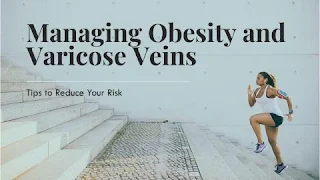If you're dealing with varicose veins, you're not alone—many people face this condition that affects the appearance and health of their legs. While there are several treatments available, yoga can offer a holistic and natural way to manage symptoms and even prevent the condition from worsening. In this article, we’ll explore how yoga can help with varicose veins and share the top five yoga poses you can try to improve circulation and alleviate discomfort.
How Yoga Can Help with Varicose Veins
Varicose veins occur when the veins in your legs become enlarged and twisted, often causing pain, swelling, and discomfort. The condition is commonly due to poor circulation, weakened vein walls, or genetic factors. While yoga may not cure varicose veins entirely, it can significantly help improve circulation, strengthen veins, and relieve the symptoms associated with the condition. Here’s how yoga can benefit those with varicose veins:
- Improves Circulation: Yoga helps to promote better blood flow by stretching and strengthening the muscles in your legs, encouraging the movement of blood back toward the heart.
- Reduces Swelling: Many yoga poses target the lower body, helping to reduce fluid retention and swelling commonly associated with varicose veins.
- Relieves Pressure: By improving blood flow and muscle tone, yoga can reduce the pressure on your veins, leading to less discomfort and heaviness in the legs.
- Stretches and Strengthens Leg Muscles: Certain yoga poses work on stretching and strengthening the muscles of the legs, which provides better support for your veins and can alleviate symptoms.
Top 5 Yoga Poses for Varicose Veins
The following yoga poses can help improve circulation, relieve discomfort, and promote overall leg health for those struggling with varicose veins. Always consult with your healthcare provider before beginning any new exercise routine, especially if you have existing health concerns.
1. Legs Up the Wall (Viparita Karani)
This simple yet effective pose helps to promote circulation and reduce swelling in the legs. By raising your legs above the level of your heart, you allow gravity to assist in the return of blood flow to your upper body.
How to Do It:
- Find a wall and sit with one hip touching it.
- Slowly lie back, extending your legs up against the wall while keeping them straight.
- Relax your arms at your sides, palms facing upward.
- Hold for 5-10 minutes, breathing deeply and focusing on relaxation.
2. Downward-Facing Dog (Adho Mukha Svanasana)
Downward-facing dog is an excellent full-body stretch that helps improve circulation, strengthen the legs, and stretch the calf muscles, which can help reduce the strain on your veins.
How to Do It:
- Start on your hands and knees, with your wrists directly under your shoulders and your knees under your hips.
- Lift your hips towards the ceiling, straightening your legs and pressing your heels toward the floor.
- Hold the position for 30 seconds to 1 minute, breathing deeply and maintaining a steady flow of air.
3. Warrior I (Virabhadrasana I)
Warrior I is a great pose to strengthen the muscles in your legs, which can help support your veins and improve circulation. It also stretches the hips, groin, and calves, which can alleviate discomfort from varicose veins.
How to Do It:
- Stand tall with your feet hip-width apart.
- Step one foot back, bending your front knee at a 90-degree angle while keeping the back leg straight.
- Reach your arms overhead, keeping your chest open and your shoulders relaxed.
- Hold for 30 seconds to 1 minute, then switch sides.
4. Tree Pose (Vrksasana)
Tree Pose helps to improve balance and strengthens the legs. This pose works on engaging the calf muscles and improving circulation, making it an effective posture for managing varicose veins.
How to Do It:
- Stand with your feet together and your arms at your sides.
- Shift your weight onto your left foot and place the sole of your right foot on your left inner thigh or calf (avoid the knee).
- Bring your hands together in front of your chest or extend them overhead.
- Hold for 30 seconds to 1 minute, then repeat on the other side.
5. Seated Forward Fold (Paschimottanasana)
This seated stretch helps lengthen the hamstrings and release tension in the lower back. It encourages blood flow to the legs and reduces discomfort from varicose veins.
How to Do It:
- Sit on the floor with your legs extended straight in front of you.
- Inhale, lengthening your spine, and as you exhale, fold forward over your legs, reaching for your feet or shins.
- Hold for 30 seconds to 1 minute, breathing deeply and relaxing into the stretch.
Additional Tips for Managing Varicose Veins
While yoga is a powerful tool for improving circulation and leg health, it’s also important to combine it with other lifestyle changes to reduce the risk of varicose veins. Here are a few additional tips:
- Stay Active: Regular physical activity, including walking, swimming, or cycling, can help keep your veins healthy.
- Elevate Your Legs: Raising your legs above your heart whenever possible can reduce swelling and promote circulation.
- Wear Compression Stockings: Compression stockings can provide extra support and help with blood flow in the legs.
Conclusion
Yoga offers numerous benefits for those dealing with varicose veins, from improving circulation to relieving leg discomfort. Incorporating poses like Legs Up the Wall, Downward-Facing Dog, and Warrior I into your routine can support your vein health and help reduce the symptoms of varicose veins. Remember, consistency is key, so practice these poses regularly to see the best results. And as always, consult with your healthcare provider before starting any new exercise regimen.

